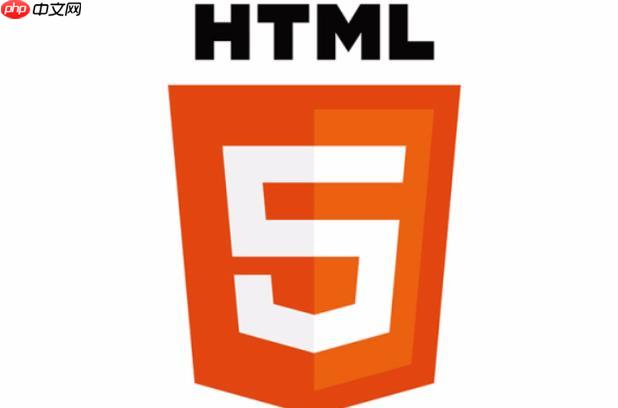无法用纯html/javascript直接列出本地目录内容,因为浏览器出于安全和隐私考虑,禁止网页随意访问本地文件系统,防止恶意网站窃取或破坏用户文件;2. 实现网页版文件管理器需采用“前端请求、后端处理、前端展示”的模式,由服务器端脚本(如php、node.js等)读取指定目录内容并返回json数据;3. 后端必须进行严格的安全控制,包括设定允许访问的基目录、验证请求路径是否在合法范围内、防止路径遍历攻击,并可结合用户认证实现权限管理;4. 前端通过javascript动态渲染服务器返回的文件列表,区分文件与文件夹并添加图标,为文件夹绑定点击事件以进入下一级目录,提供返回按钮实现路径回退,并妥善处理加载状态与错误提示,确保用户体验流畅完整。

HTML本身,或者说纯粹的客户端HTML和JavaScript,是无法直接制作一个功能完整的“文件管理器”来列出你电脑本地目录内容的。这主要是出于浏览器严格的安全限制。如果你想在网页上实现类似的功能,必然需要一个服务器端来处理实际的文件系统操作,然后将结果返回给前端显示。说白了,HTML只是个展示界面,真正的“力气活”得交给后端去干。
要实现一个网页版的文件管理器并列出目录内容,核心思路是“前端请求,后端处理,前端展示”。
fetch
XMLHttpRequest
以PHP为例:
立即学习“前端免费学习笔记(深入)”;
后端(api.php
path
<?php
header('Content-Type: application/json');
header('Access-Control-Allow-Origin: *'); // 生产环境请务必限制来源
$baseDir = realpath('./files'); // 假设你的文件都放在网站根目录下的 'files' 文件夹里
$requestedPath = isset($_GET['path']) ? $_GET['path'] : '';
$fullPath = realpath($baseDir . '/' . $requestedPath);
// 安全检查:确保请求的路径在允许的基目录下
if (strpos($fullPath, $baseDir) !== 0 || !is_dir($fullPath)) {
echo json_encode(['error' => 'Invalid path or directory not found.']);
exit;
}
$items = [];
$scan = scandir($fullPath);
if ($scan !== false) {
foreach ($scan as $item) {
if ($item === '.' || $item === '..') {
continue;
}
$itemPath = $fullPath . '/' . $item;
$type = is_dir($itemPath) ? 'directory' : 'file';
$size = ($type === 'file') ? filesize($itemPath) : null;
$modified = filemtime($itemPath);
$items[] = [
'name' => $item,
'type' => $type,
'size' => $size,
'modified' => date('Y-m-d H:i:s', $modified)
];
}
} else {
echo json_encode(['error' => 'Could not read directory.']);
exit;
}
echo json_encode($items);
?>前端(index.html
<!DOCTYPE html>
<html lang="zh-CN">
<head>
<meta charset="UTF-8">
<meta name="viewport" content="width=device-width, initial-scale=1.0">
<title>简易文件管理器</title>
<style>
body { font-family: sans-serif; margin: 20px; }
#file-list { border: 1px solid #ccc; padding: 10px; min-height: 200px; }
.item { padding: 5px 0; cursor: pointer; }
.item:hover { background-color: #f0f0f0; }
.item.directory::before { content: '? '; }
.item.file::before { content: '? '; }
#current-path { margin-bottom: 10px; font-weight: bold; }
#back-button { margin-bottom: 10px; padding: 8px 15px; cursor: pointer; }
</style>
</head>
<body>
<h1>我的服务器文件</h1>
<button id="back-button">返回上一级</button>
<div id="current-path">当前路径: /</div>
<div id="file-list"></div>
<script>
const fileListDiv = document.getElementById('file-list');
const currentPathDiv = document.getElementById('current-path');
const backButton = document.getElementById('back-button');
let currentPath = ''; // 初始路径为空,表示根目录
async function fetchFiles(path) {
try {
const response = await fetch(`api.php?path=${encodeURIComponent(path)}`);
const data = await response.json();
if (data.error) {
fileListDiv.innerHTML = `<p style="color: red;">错误: ${data.error}</p>`;
return;
}
fileListDiv.innerHTML = ''; // 清空现有列表
currentPathDiv.textContent = `当前路径: /${path}`;
data.forEach(item => {
const itemDiv = document.createElement('div');
itemDiv.classList.add('item', item.type);
itemDiv.textContent = item.name;
if (item.type === 'directory') {
itemDiv.addEventListener('click', () => {
const newPath = path ? `${path}/${item.name}` : item.name;
currentPath = newPath;
fetchFiles(newPath);
});
} else {
// 如果是文件,可以考虑提供下载链接
// itemDiv.addEventListener('click', () => {
// window.open(`files/${path ? path + '/' : ''}${item.name}`, '_blank');
// });
}
fileListDiv.appendChild(itemDiv);
});
backButton.style.display = path ? 'block' : 'none';
} catch (error) {
console.error('获取文件失败:', error);
fileListDiv.innerHTML = `<p style="color: red;">加载失败,请检查网络或服务器配置。</p>`;
}
}
backButton.addEventListener('click', () => {
const pathParts = currentPath.split('/');
pathParts.pop(); // 移除当前目录
currentPath = pathParts.join('/');
fetchFiles(currentPath);
});
// 页面加载时获取初始文件列表
fetchFiles(currentPath);
</script>
</body>
</html>这问题,说白了,就是个安全和隐私的底线。浏览器设计之初就考虑到了恶意网站的风险。如果纯粹的HTML和JavaScript能直接访问你本地的文件系统,那简直是灾难性的。想象一下,你访问一个看似无害的网页,结果它背地里把你的文档、照片甚至银行信息都偷偷上传了,或者直接删除了你的重要文件,这谁受得了?
所以,浏览器实施了严格的“沙盒”机制。每个网页都在一个受限的环境里运行,它能做的,基本上就只是展示内容和与用户进行有限的交互。它不能随意读写你的硬盘,不能执行系统命令,更不能直接访问你电脑上的任意文件。这就像给网页戴上了手铐脚镣,确保它在你的设备上不会“乱来”。当然,这也不是绝对的,比如
input type="file"
安全地列出目录内容,这事儿可不能马虎。服务器端脚本虽然拥有访问文件系统的权限,但如果设计不当,同样可能成为安全漏洞。我个人觉得,最核心的原则就是“最小权限”和“路径验证”。
首先,你得明确你的脚本能访问哪些目录。在上面PHP的例子里,我用了
$baseDir = realpath('./files');files
../
其次,每次接收到前端传来的路径参数时,一定要进行严格的验证。我用了
realpath()
strpos($fullPath, $baseDir) !== 0
$baseDir
../
再者,考虑权限控制。如果你这个文件管理器是给特定用户使用的,那么在后端就需要加入用户认证和授权的逻辑。比如,只有登录用户才能访问,而且每个用户可能只能访问他们自己的专属目录。这涉及到会话管理、数据库查询等,比简单的目录列表要复杂得多。
最后,错误处理和日志记录也别忘了。当目录不存在、权限不足或者发生其他意外时,后端应该返回清晰的错误信息,并且最好能记录到服务器日志中,方便排查问题。别把服务器的内部错误信息直接暴露给前端,那会泄露很多有用的攻击信息。
前端的展示和交互,主要就是围绕着用户体验和功能性展开了。拿到服务器返回的JSON数据后,JavaScript的任务就是把这些冰冷的数据转化成用户能看懂、能操作的界面。
我通常会这么做:
div
li
file
directory
<a>
fetchFiles
window.open()
currentPathDiv
整个前端的逻辑,说白了,就是围绕着“状态管理”和“UI同步”在转。
currentPath
currentPath
以上就是HTML如何制作文件管理器?怎么列出目录内容?的详细内容,更多请关注php中文网其它相关文章!

HTML怎么学习?HTML怎么入门?HTML在哪学?HTML怎么学才快?不用担心,这里为大家提供了HTML速学教程(入门课程),有需要的小伙伴保存下载就能学习啦!

Copyright 2014-2025 https://www.php.cn/ All Rights Reserved | php.cn | 湘ICP备2023035733号